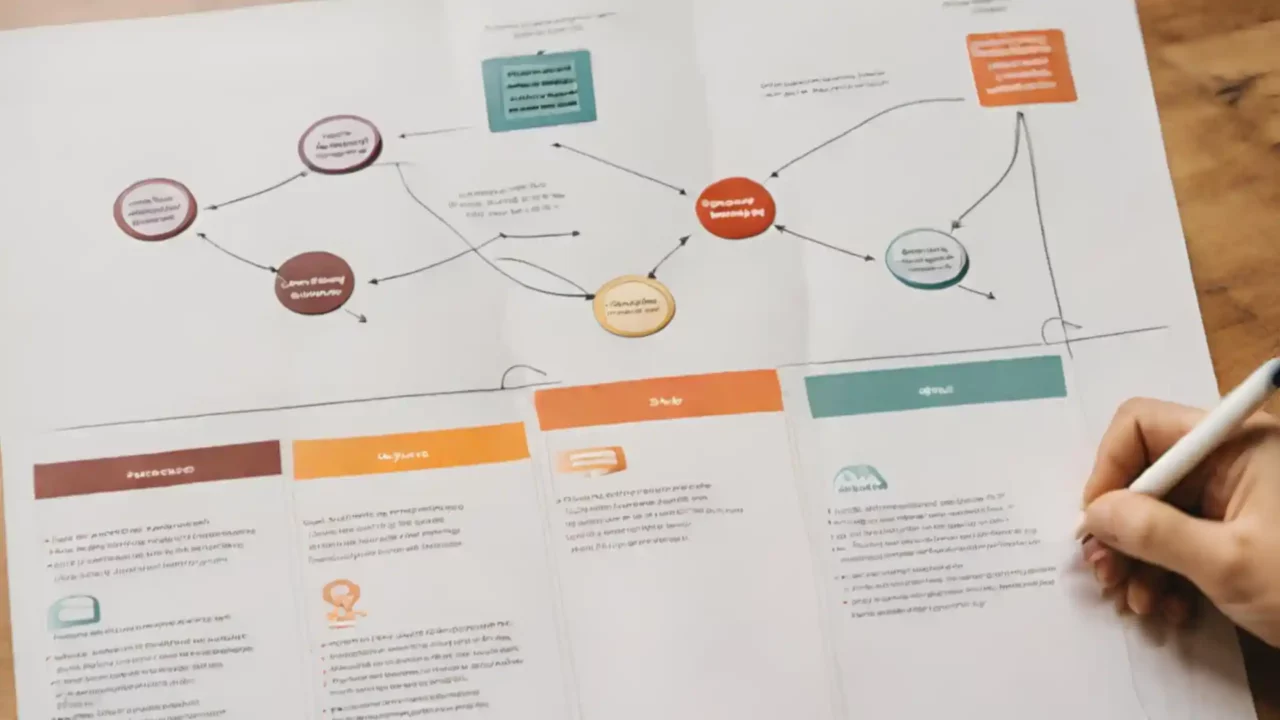Accelerate Growth Through Integrated Buying Experiences
Learn How to Accelerate Growth Through Integrated Buying Experiences
Imagine you’re the conductor of a symphony orchestra.
Each musician (Marketing, Sales, Customer Success) is incredibly talented, but they must be in perfect harmony to create a truly beautiful performance (customer journey and growth).
Disjointed Buying Experiences:
Currently, it’s like the instruments are playing different songs. Marketing might be driving brand awareness (the violins are playing a lively tune), but Sales is giving technical specs (the cellos are playing a slow dirge).
Customer Success isn’t even there yet (no percussion!). The customer needs clarification on the full value proposition (the music is cacophonous).
Integrated Buying Experiences:
An integrated approach is like a well-rehearsed symphony. Marketing introduces the value proposition with a captivating melody (violins). Sales seamlessly complement it with targeted product features (cellos harmonize).
Customer Success joins in at the perfect moment, adding the final flourish (percussion punctuates the piece). The customer is engaged, understands the complete value, and is swept away by the beautiful music (a smooth and delightful buying journey).
Benefits of Integration:
Just like a harmonious symphony creates a powerful emotional impact, integrated buying experiences lead to:
- Increased customer satisfaction (a standing ovation)
- Faster sales cycles (reduced time to the beautiful finale)
- Improved brand loyalty (customers raving about the performance)
By fostering collaboration between departments and ensuring a consistent message throughout the buying journey, you can turn your talented musicians into a high-performing orchestra, accelerating growth and achieving a beautiful symphony of success.
Accelerate Growth Through Integrated Buying Experiences: A Future-Forward Approach for Businesses
In today’s fiercely competitive business landscape, providing seamless and integrated buying experiences has become a critical driver for business growth.
Not only does it enhance customer satisfaction and loyalty, but it also differentiates your brand in the crowded marketplace.
Let’s delve deeper into how integrated buying experiences can accelerate growth for your business.
Understanding Integrated Buying Experiences
Integrated buying experiences combine multiple channels into a seamless consumer shopping experience.
This approach ensures a consistent brand experience across all touchpoints, whether a physical store, an online platform, or a mobile app.
Here’s a breakdown of how to audit, research, and understand integrated buying experiences on your website:
1. Audit
- Customer Journey Mapping: Create a visual representation of all the stages and touchpoints a buyer goes through on your website. This includes everything from initial awareness to purchase to post-purchase interactions. Look for inconsistencies in the messaging, design, and ease of use between each interaction.
- Content Analysis: Review marketing materials, product descriptions, website copy, sales support materials, and customer communications. Is there a cohesive story across them? Does the tone and information level suit each stage of the buyer journey?
- Data & Measurement: Analyze your website analytics and sales/customer support data. Look for:
- Drop-off points: Where do people leave the website at high rates?
- Friction: Are there confusing processes, poorly performing forms or pages with slow load times?
- Engagement: Where does content get high interaction and lead to desired actions?
2. Research
- Competitive Analysis: Examine your competitors’ websites. What is their integrated buying experience? Where do they excel, and where are their gaps? This can reveal industry best practices and new ideas.
- Customer Surveys: Directly ask your customers about their buying experience. Net Promoter Score (NPS) surveys can track satisfaction over time. Use qualitative questions to dig into specific pain points and positives.
- Usability Testing: Have real users try to complete key tasks on your website and observe them. Think-aloud protocols (having them verbalize their thoughts while taking action) can reveal frustrations and points of confusion.
3. Understanding
- Synthesize Insights: Combine the data from your audit and research and look for patterns. Where are customers struggling? Where are messages disconnected? What are the bottlenecks that slow the buying process?
- Root Cause Analysis: Go beyond symptoms and understand why these issues occur. Are departments siloed? Are there conflicting goals? Does the technology need to support smooth handoffs between stages?
- Prioritize Fixes: Focus on the problems that will positively impact the customer experience and your business goals. Only try to fix some things at a time. A few key improvements are often transformative.
Tools to Help
- Website Analytics: Platforms like Google Analytics.
- Heat Mapping and Session Recording: Hotjar, CrazyEgg
- Survey tools: SurveyMonkey, Qualtrics
- Customer Journey Mapping Tools: Smaply, Lucidchart
Important Notes:
- Iteration is key: This process should be ongoing. Consumer expectations evolve, so constant monitoring and refinement are needed.
- Internal Collaboration: True integrated buying experiences require strong collaboration between Marketing, Sales, and Customer Success teams. Break down silos and align on the ideal customer journey.
The Importance of Integrated Buying Experiences

An integrated buying experience is more than just a convenience for customers; it’s a powerful growth catalyst for businesses.
It facilitates customer satisfaction and retention, propels brand loyalty, and drives revenue growth. By providing customers with a seamless and personalized shopping experience, businesses can set themselves apart from the competition and foster a unique brand identity.
Imagine a prospect walking into a disorganized store. Clothes are scattered, staff give conflicting advice, and checkout is a frustrating maze. That’s what a disconnected buying experience feels like online.
An integrated approach, however, is like a well-run store. Everything flows seamlessly, staff work together, and the customer feels valued. This translates directly to sales. Studies show a 10% uplift in sales when marketing, sales, and customer success work together.
Think of it as an orchestra – a disjointed one creates noise, while a harmonious one creates a captivating performance, driving customer satisfaction and growth. That’s the power of an integrated buying experience.
The Role of Technology in Integrated Buying Experiences
Imagine a seamless sales funnel where website visitors can instantly find clear product explanations, compare options with ease, and connect with sales support. That’s the power of integrated buying experiences.
Technology like AI chatbots can answer questions 24/7, while personalized product recommendations keep visitors engaged. This translates to higher conversion rates, faster sales cycles, and happier customers – all feeding directly into increased ROI. Let’s invest in building a tech-driven buying journey that turns website visits into loyal customers.
Technology plays a pivotal role in facilitating integrated buying experiences. Advanced tools like AI, machine learning, and data analytics enable businesses to track customer behavior across channels, providing insights into their preferences and buying habits.
This data allows businesses to tailor their offerings, providing customers with personalized, relevant, and timely recommendations that enhance their shopping experience.
Accelerating Growth Through Integrated Buying Experiences
By offering an integrated buying experience, businesses can significantly accelerate their growth. This approach allows them to engage customers more effectively, promote brand loyalty, and drive repeat purchases, contributing to revenue growth.
Furthermore, an integrated buying experience enables businesses to capture and analyze valuable customer data. This data can inform strategic decisions, helping businesses to optimize their operations, improve their offerings, and ultimately drive growth.
Case Study: A Success Story
Consider the case of a popular fashion retailer. By integrating their online and in-store shopping experiences, they were able to provide customers with a seamless, personalized shopping journey.
They leveraged technology to track customer behavior and preferences, using this data to tailor their offerings and recommendations. This approach resulted in increased customer satisfaction and loyalty, driving significant growth for the business.
Case Study 1: The Furniture Retailer
Challenge: A high-end furniture retailer offered gorgeous pieces in showrooms but had a rudimentary website. Sales staff were fielding questions on inventory and pricing that should have been readily available online. This led to frustration and missed sales opportunities.
Integration Approach: The company invested in:
- 3D Visualization Tools: Customers could virtually “place” furniture in their homes, improving confidence before purchasing.
- Robust Product Information Management: The website now has in-depth details, specs, and photos, making online browsing a rich experience.
- Live Chat: Sales associates could directly engage with website visitors, offering advice and closing deals remotely.
Results:
- 20% increase in online conversion rates.
- 15% decline in phone inquiries, freeing up sales staff for high-value interactions.
- Overall customer satisfaction scores rose as the buying process became seamless.
Case Study 2: The B2B Software Company
Challenge: A complex software product led to lengthy sales cycles, as leads required extensive demos and consultations to understand the solution. Marketing generated interest, but sales were bottlenecked.
Integration Approach:
- Interactive Product Tours: Built into the website, these tours guided visitors through key features, simulating the software experience.
- Self-Service Scheduling: Prospects could book sales demos on the website, synced with sales team calendars.
- Marketing Automation: Nurtured leads with targeted content based on website behavior, pre-qualifying them for sales engagement.
Results:
- The average sales cycle was shortened by 30%.
- 10% increase in lead qualification rate, improving sales efficiency.
- Enhanced customer understanding of product value before sales conversations.
Case Study 3: The Apparel Brand
Challenge: This trendy apparel company had a vibrant social media presence but an inconsistent website experience. “Buy Now” buttons on social posts led to clunky product pages with limited information.
Integration Approach:
- Shoppable Posts: Integrated directly within social media feeds, allowing for in-app purchases.
- User-Generated Content: Curated social content showcased products in real-life settings.
- “Complete the Look” Recommendations: Used AI to create outfit suggestions, boosting average order value.
Results:
- 35% increase in sales generated directly from social channels.
- Improved mobile conversion rates (previously a pain point).
- Higher engagement as social media directly spurred purchase activity.
Ditch the Pixel Dungeon: Forge Your Perfect Headless Website
Forget clunky templates and pixelated walls. Build a website that dances with AI that breathes personalization, and leaves your visitors screaming (in a good way). Headless development unleashes endless possibilities. Join us and craft your digital masterpiece. Dare to break the internet? Contact us today!

Conclusion: The Power of Integrated Buying Experiences
In conclusion, integrated buying experiences represent a powerful growth accelerator for businesses. By providing customers with a seamless, personalized shopping journey, businesses can set themselves apart from the competition, foster customer satisfaction and loyalty, and ultimately drive growth.
Moreover, technology enables integrated buying experiences, providing businesses with valuable customer data and insights. By leveraging this data, businesses can make strategic decisions that drive operational efficiency, improve their offerings, and accelerate growth.
As the business landscape becomes increasingly competitive, offering an integrated buying experience is no longer optional; it’s a necessity. By embracing this approach, businesses can meet and exceed customer expectations, accelerate their growth, and secure a competitive edge in the marketplace.

